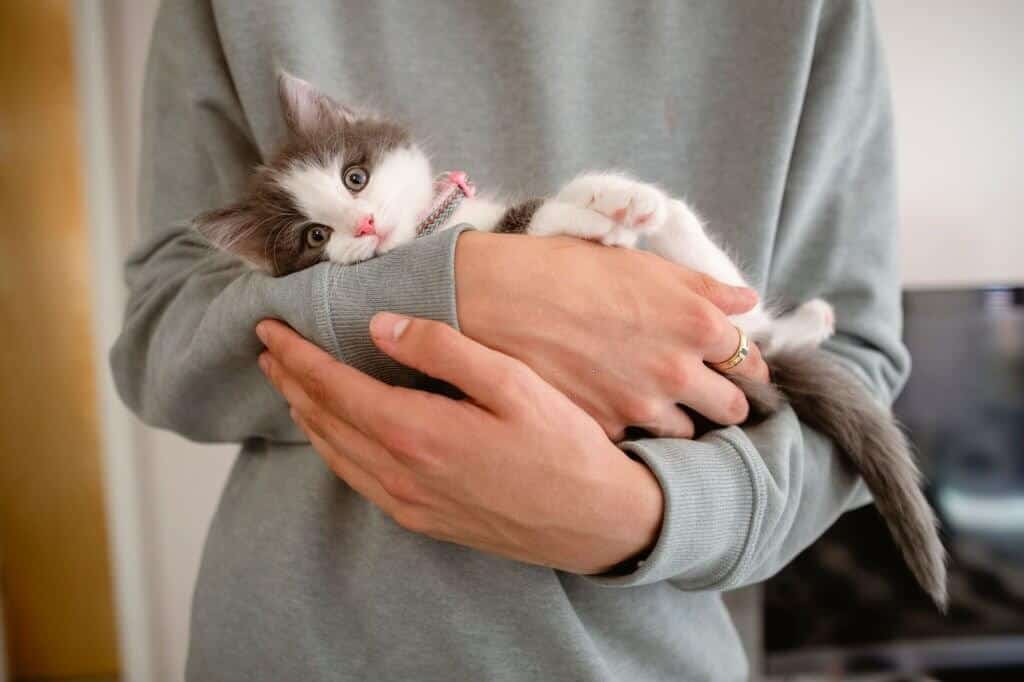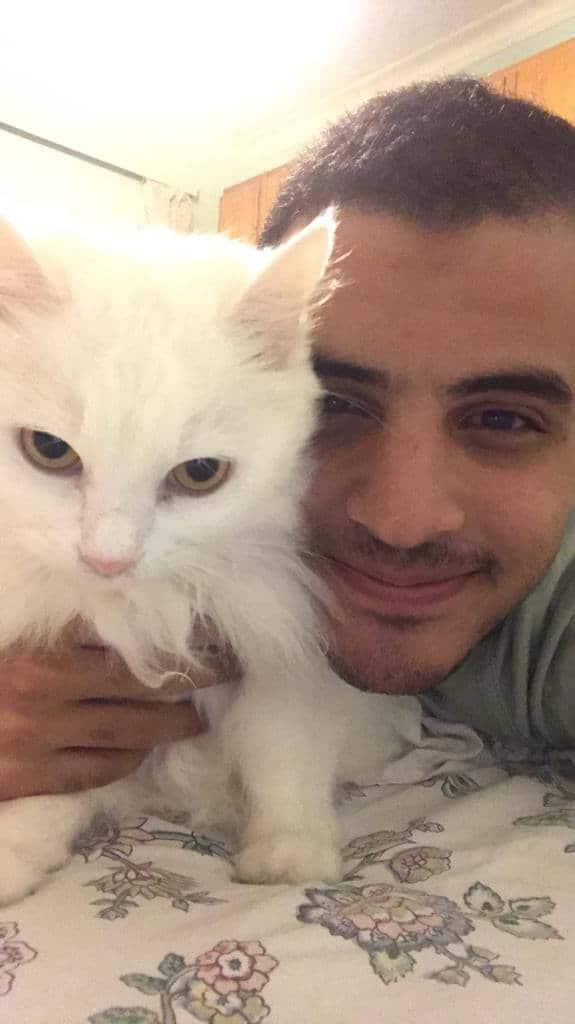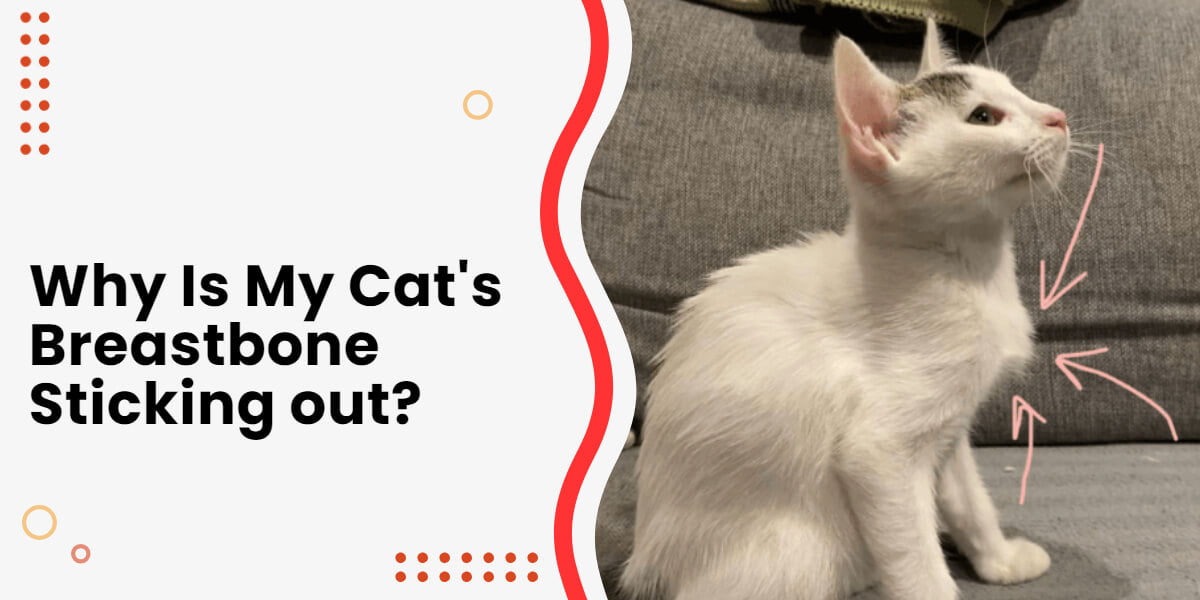Has your cat’s breastbone started mysteriously sticking out? Don’t panic. In many cases, a protruding sternum or chest bone bump signals no dire cause for concern. However, while this distorted xiphoid process often rights itself in growing kittens or follows minor falls, it can also indicate injury or illness demanding prompt veterinary care.
Determining what’s behind your cat’s peculiar poke requires vigilance. If the protrusion appeared suddenly or is worsening, lethargy, appetite issues, breathing troubles, or pain arise, contact your vet immediately. They can diagnose if simple rest and monitoring or swift treatment for ailments like abscesses, fractures, or even tumors is required.
Catching chest bone abnormalities early is key to easing worries. Get the facts on reasons for protrusions and watch for related symptoms. With information and attention, you can correctly interpret kitty’s distress signals and take appropriate action.
We are here to outline several possible reasons why your cat’s xiphoid may be sticking out.
Table of Contents
Why is my cat’s sternum sticking out?
A cat’s sternum sticking out is most often caused by normal bone development in growing kittens or minor trauma from play or falls resulting in temporary swelling or bruising. However, protruding breastbones may also indicate more serious conditions like sternal fractures, abscesses, or tumors, typically accompanied by lethargy, pain, or appetite changes. Monitoring for additional symptoms can help determine if a protrusion will resolve on its own or requires veterinary care.
Deep Dive into the Reasons behind a cat’s Xiphoid sticking out
You may feel a protrusion in your feline friend’s sternum for several reasons, some more serious than others. The most common possible causes are listed and explained below.
1- Kitten’s Bones Are Still Developing

In some instances, the protrusion of the xiphoid (cartilage part of the breastbone) in cats results from defective development while still in the mother’s womb. In kittens, the xiphoid is often still flexible. You can tell if your kitten’s xiphoid is abnormal by observing if it flattens out, remains hooked, or stays protruding when gentle pressure is applied.
Even if you can still feel the protrusion, there’s probably no need for concern. Your cat is still young and developing, and with time, the bony lump on her sternum is likely to go away on its own.
Cats that have a prominently protruding xiphoid up until even six months of age can develop a perfectly normal sternum when they’re one year old. As your cat grows and her muscle mass fully develops, the protrusion will likely become much less pronounced.
If it doesn’t, it may give your feline friend a slightly strange appearance, especially if your cat’s short-haired. But If your cat’s showing no signs of pain or breathing problems, and is perfectly fine in every other regard, then you have nothing to worry about.
Related:
– Is it Normal to See My Cat’s Heart Beating?
– Black Spots on My Cat’s Tongue, Should I Worry?
2- Mild Trauma Or Fractured/Broken Bone
Cats are highly curious and active creatures; they are always up to some mischief. So naturally, cats that go outdoors are more susceptible to mishaps. But even if your cat’s always indoors, she can get injured while exploring, running, and climbing different things around the house.
The protrusion on your cat’s sternum is likely to be due to injury if you see changes in your cat’s behavior, such as lethargy, decreased appetite, visible discomfort, or whining when you pick her up. Your feline companion likely has a broken or fractured xiphoid. It is also possible that your cat’s injury is minor, and the lump on her chest is merely a mild trauma or contusion.
What You Should Do
In the case that the lump on your cat’s sternum isn’t going down by itself, you should consult your vet right away. They are likely to conduct an x-ray or a needle aspirate on your cat to come to a precise diagnosis.
The most common way to deal with a broken xiphoid is through pain and anti-inflammatory medication and ensuring that your cat isn’t putting herself in situations that can cause further harm and aggravate the existing injury. It’s unlikely that your cat will require surgery unless the injury is highly serious.
Alternative Reasons
As mentioned, some other typical reasons can make a cat’s breastbone area seem swollen or stick out more than usual. The bone becomes more visible if the muscles and fat around it have broken down. Loss of this padding over the chest can leave the bony sections closer to the skin looking bigger. There are a few situations that can lead to such changes. A cat’s sternum may poke out more due to:
Must Read:
– Why Are My Cat’s Sides Sunken After Spaying?
– Why Does My Cat’s Fur Look Separated?
– Why Am I Able to See My Cat’s Heart Beating?
3- Being underweight or having lost weight recently
Cats who are naturally thin or who have recently lost noticeable weight due to illness, parasites, dental disease, reduced appetite, maldigestion, malabsorption, or other medical causes, can start to lose fat and muscle coverage over the ribs and breastbone area. With less protective padding over the bones, the shape of the ribs and the tip of the sternum becomes much more visible underneath the skin of an underweight cat.
4- Dehydration
When cats become dehydrated from insufficient water intake, not getting enough fluids to meet bodily demands, or losing fluids and electrolytes from vomiting, diarrhea, etc., it causes skin and muscle tissues to lose elasticity, turgor, and fullness. As tissues become less supple and “deflated” due to dehydration, they cling tighter to underlying skeletal structures. This reveals more bony prominences throughout the body, including a more pronounced appearance of the sternum tip since it lacks the normal surrounding tissue volume.
5- Old age and muscle loss
It is very common for senior and geriatric cats to gradually start losing muscle mass and body fat as part of the aging process. With each passing year, cats typically become more frail with declining organ reserves. Reduced activity levels and slower metabolisms also contribute to the thinning out of elderly cats. As more muscularity and fat padding disappear from the chest wall due to age-related changes, underlying bony landmarks like the xiphoid process often protrude more obviously.
Conclusion
Sometimes a cat’s chest bone may stick out more than normal. In kittens, this can be because their bones are still growing. An injury may also cause swelling that makes the bone poke out. Older or thinner cats can lose the fat and muscle around the bone, so it looks more obvious.
If your cat is acting normal otherwise, a poking out chest bone usually isn’t serious. It may go away on its own. But if they seem to be in pain, losing appetite, or having trouble breathing, take them to the vet. Tests can check for broken bones, wounds, or other problems.
Watch to see if the poking bone is getting worse. Also watch how your cat is feeling and acting day-to-day. Call your vet if you notice changes in energy level, comfort eating and resting, or quality of life. Quick action is important if your cat seems to be declining or the bone is rapidly sticking out more. With care at home and your vet’s help, most cats recover well.

I’ve been living with cats since 2008 and I can confidently say I have more feline friends than humans lol. I currently live with 5 cats in different life stages; two of them are less than one year old, one is 2-ish years old and the oldest two are 9-ish years old. I’ve developed a strong bond with cats over the years and I’m eager to share my experience through this blog. You can learn more about my cats here.

